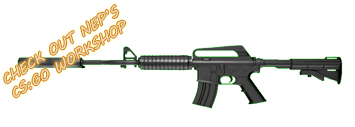安装 Steam
登录
|
语言
繁體中文(繁体中文)
日本語(日语)
한국어(韩语)
ไทย(泰语)
български(保加利亚语)
Čeština(捷克语)
Dansk(丹麦语)
Deutsch(德语)
English(英语)
Español-España(西班牙语 - 西班牙)
Español - Latinoamérica(西班牙语 - 拉丁美洲)
Ελληνικά(希腊语)
Français(法语)
Italiano(意大利语)
Bahasa Indonesia(印度尼西亚语)
Magyar(匈牙利语)
Nederlands(荷兰语)
Norsk(挪威语)
Polski(波兰语)
Português(葡萄牙语 - 葡萄牙)
Português-Brasil(葡萄牙语 - 巴西)
Română(罗马尼亚语)
Русский(俄语)
Suomi(芬兰语)
Svenska(瑞典语)
Türkçe(土耳其语)
Tiếng Việt(越南语)
Українська(乌克兰语)
报告翻译问题




















|🌈 🎈 R&F
🎈 Thank you All
_______💕___🏃__
Comment for Comment
Profile 100%Back
Look into the official Valve SDK Doc for insight on how materials work in CSGO's Source engine, linked below:
GIMP alpha channel
https://developer.valvesoftware.com/wiki/GIMP
GIMP Alpha channel vids:
https://m.youtube.com/watch?v=LQCziSTNJgQ
https://www.youtube.com/watch?v=A9aZdPqs17M
Using GIMP VTF plugin?
Be sure you're using GIMP 2.8.0
Not using it? Follow this:
https://developer.valvesoftware.com/wiki/Creating_a_Material
This wiki has info about making skins / modding: https://psteamcommunity.yuanyoumao.com/sharedfiles/filedetails/?id=1501754039
Workaround "GIMP Tools" > "GIMP 2.8.x" of the wiki
Use .tga or .tiff image types instead of .jpg or .PNG They're lossless and supports alpha. More info in the Valve Source SDK Doc
3D = Use Blender with GIMP. Formost accurate lighting, use in-game workbench
Non-GIMP Users I recommend reading the Valve SDK Docs for better understanding